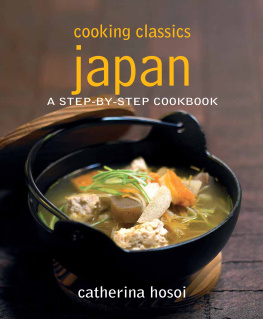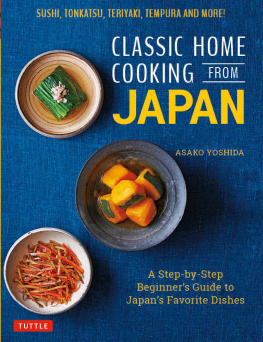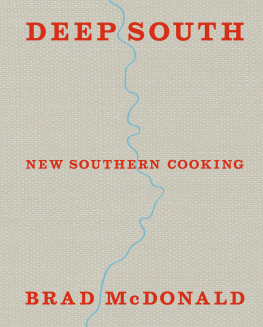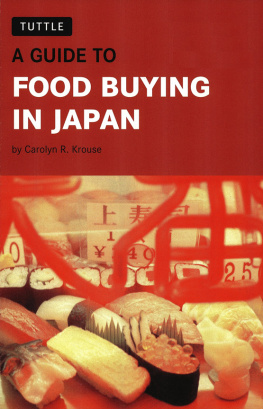cooking classics
japan
cooking classics
japan
A STEP-BY-STEP COOKBOOK
catherina hosoi
The publisher wishes to thank Pyrex Metalware, Visions and Ekco 123 for the loan
of kitchen utensils used in this book.
Designers : Lynn Chin and Darren Tan
Photographer : Joshua Tan, Elements By The Box
Copyright 2012 Marshall Cavendish International (Asia) Private Limited
Published by Marshall Cavendish Cuisine
An imprint of Marshall Cavendish International
All rights reserved
No part of this publication may be reproduced, stored in a retrieval system or
transmitted, in any form or by any means, electronic, mechanical, photocopying,
recording or otherwise, without the prior permission of the copyright owner. Request
for permission should be addressed to the Publisher, Marshall Cavendish International
(Asia) Private Limited, 1 New Industrial Road, Singapore 536196.
Tel: (65) 6213 9300 Fax: (65) 6285 4871
E-mail:
Online bookstore: http://www.marshallcavendish.com/genref
Limits of Liability/Disclaimer of Warranty: The Author and Publisher of this book have
used their best efforts in preparing this book. The Publisher makes no representation
or warranties with respect to the contents of this book and is not responsible for the
outcome of any recipe in this book. While the Publisher has reviewed each recipe
carefully, the reader may not always achieve the results desired due to variations in
ingredients, cooking temperatures and individual cooking abilities. The Publisher shall
in no event be liable for any loss of profit or any other commercial damage, including
but not limited to special, incidental, consequential, or other damages.
Other Marshall Cavendish Offices:
Marshall Cavendish International. PO Box 65829, London, EC1P 1NY, UK Marshall
Cavendish Corporation, 99 White Plains Road, Tarrytown NY 10591-9001, USA
Marshall Cavendish International (Thailand) Co Ltd. 253 Asoke, 12th Flr, Sukhumvit
21 Road, Klongtoey Nua, Wattana, Bangkok 10110, Thailand Marshall Cavendish
(Malaysia) Sdn Bhd, Times Subang, Lot 46, Subang Hi-Tech Industrial Park, Batu Tiga,
40000 Shah Alam, Selangor Darul Ehsan, Malaysia
Marshall Cavendish is a trademark of Times Publishing Limited
National Library Board, Singapore Cataloguing-in-Publication Data
Hosoi, Catherina.
Japan : a step-by-step cookbook / Catherina Hosoi. Singapore : Marshall Cavendish
Cuisine, c2012.
p. cm. (Cooking classics)
Includes index.
ISBN : 978 981 4435 20 8
1. Cooking, Japanese. I. Title. II. Series: Cooking classics.
TX724.5.J3
641.5952 -- dc22
OCN768267298
Printed in Singapore by KWF Printing Pte Ltd
contents
introduction
Japanese cuisine is very popular particularly with people who enjoy healthy yet delicious
meals. In Japanese homes, mothers usually prepare meals based on traditional cooking
styles with some influence from Western or Chinese cuisines. These Western and Chinese
influenced dishes are called yofu and chuka respectively.
A typical Japanese meal would include a rice (gohan) or noodle
(men-rui) dish served with meat or seafood. These meals would
come served with side dishes such as salads or simmered dishes
consisting of vegetables, tofu, various kinds of seaweed, pickles
and soup. You will often find four to five dishes laid out on a table.
These dishes can also be packed into bento boxes to be brought
to the office or school.
Other than the three main meals of the day, the Japanese are known
to enjoy snacks or desserts in the afternoons. Known as san-ji-no
oyatsu or teatime, traditional snacks such as glutinous rice balls
(dango) coated with sweet soy sauce and chilled jelly with fruit
(anmitsu) are served together with tea. These days, you will also
find Western-style sweets such as ice cream, pastries and cakes
served at teatime.
When it comes to cooking at home, most households would have
the basic ingredients stocked in the kitchen. These seasonings
and sauces are the foundations of most Japanese dishes. They are
Japanese soy sauce (shoyu), soy bean paste (miso), sweetened rice
wine (mirin) and rice wine (sake). Various kinds of seaweed are
usually used in home cooking too as Japan is surrounded by the sea.
The most commonly used variety is kelp (konbu), which forms the
basis for cooking stock called dashi, which is used to prepare miso
soups, noodle broths and simmered dishes.
Thanks to the increased popularity of Japanese cuisine, Japanese
ingredients are easy to find even outside of Japan. I have also
ensured that the recipes included in this cookbook use products and
ingredients which are widely and easily available.
While it is easy to find popular Japanese dishes at restaurants, there
is a whole repertoire of Japanese home-style cooking not well-known
outside of the country. These dishes are well-loved by Japanese
families and I have included them in this cookbook to introduce
you to the wide variety of Japanese classics. With step-by-step
photographs and an easy-to-follow format, I hope this book helps
you discover the joy of Japanese cooking at home. Ganbatte!
cooking techniques
deep-frying
Introduced to Japan in the 1500s by the Portuguese, deep-frying
has become a widely-accepted cooking method in Japan. Coating
seafood, meats and vegetables in a light batter and cooking them
in hot oil ensures that the shape and flavours of the ingredients
























